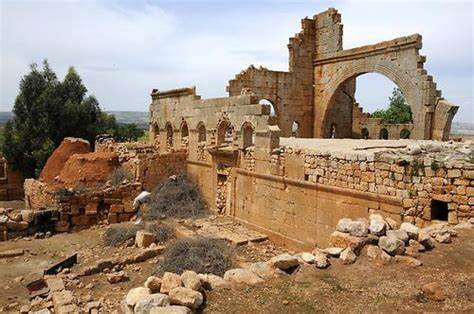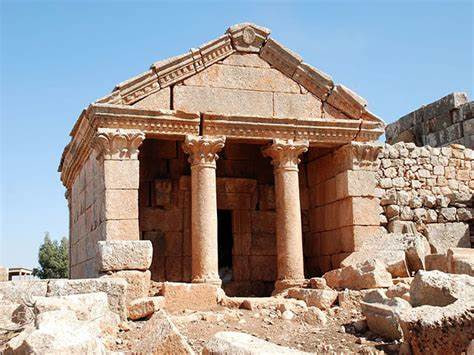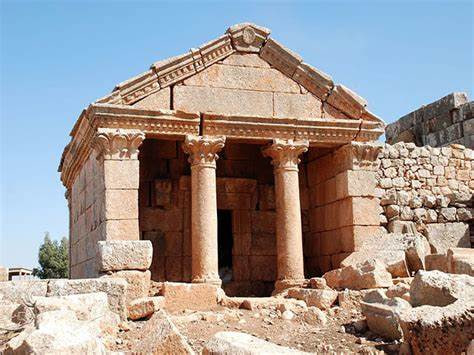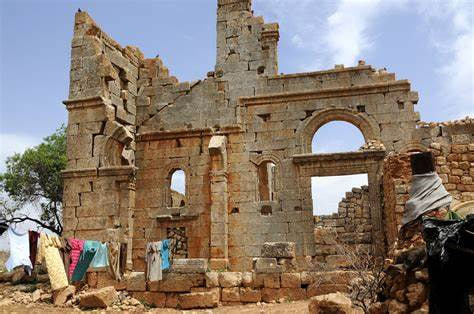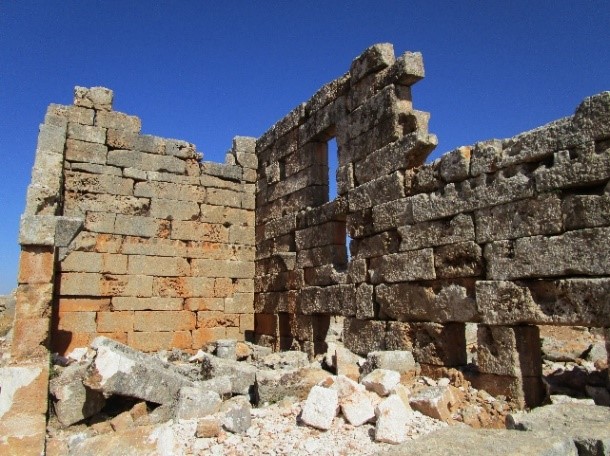Ruweiha is located on top of a limestone plateau in the heart of Mount al-Zawiya and was one of the richest centers of Byzantine rural life. It was built in the early 5th century AD and flourished thanks to the trade of oil and wine, as evidenced by open stone pressing basins to the west of the site.
The most significant structure is a 32 meter long, triple-aisled basilica, once the roof with wood and covered with a pendic sheet that was later confiscated under the crusader.
To its south stands a two-story pyramid-shaped tomb, with a burial chamber adorned with carvings of intersections and figures holding censorship.
The northern villa includes a colonnade with corinthic columns and a 14 meter depth well equipped with a spiral staircase. Its mosaic flooring shows symbols of vineyards and harvesting.
Following the 1157 earthquake, the construction and the Ottomans later turned over the stones for fortifications in Idlib.
Today, the site is partially destroyed, with the southern walls and the lower part of the grave still standing.
To the south lies a two-tiered pyramid-shaped mausoleum containing a burial crypt adorned with cross engravings and incense holders.
The northern villa includes a colonnade of Corinthian columns and a well with a depth of 14 meters, equipped with a spiral staircase; its mosaic floor displays symbols of vines and harvest.
Following the earthquake of 1157, urban development declined, and the Ottomans repurposed its stones for fortifications in Idlib. Today, the site is partially destroyed, with only the southern walls and the lower part of the mausoleum remaining.

